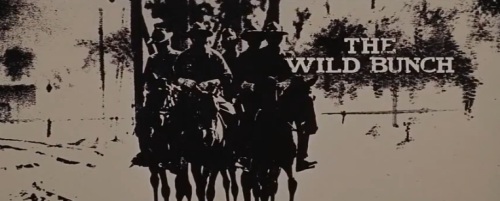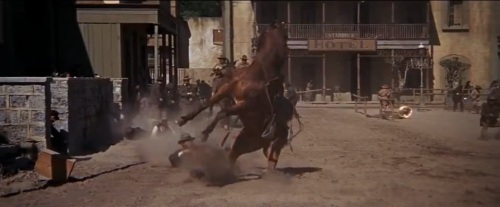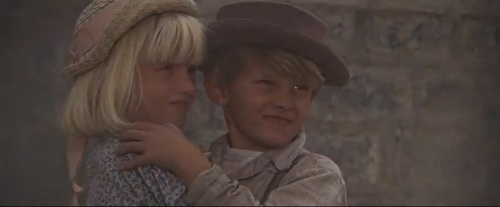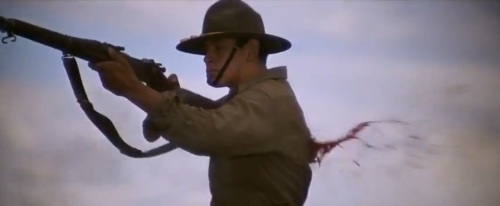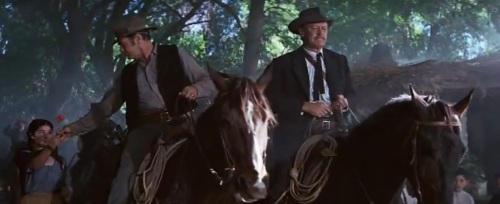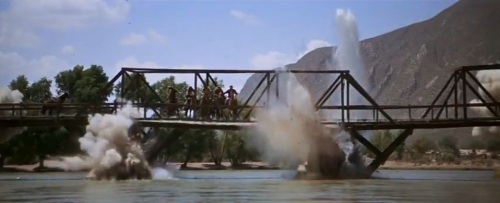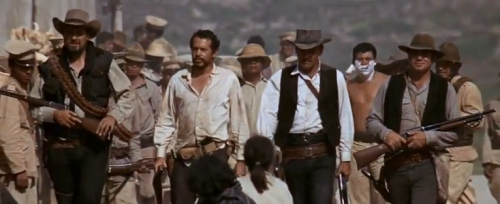PICTURE: THE LAST PICTURE SHOW (US, Peter Bogdanovich)
(2nd: A Clockwork Orange (UK, Stanley Kubrick)
followed by: McCabe and Mrs. Miller (US, Robert Altman)
Fiddler on the Roof (US, Norman Jewison)
The French Connection (US, William Friedkin)
Punishment Park (UK/US, Peter Watkins)
Sunday, Bloody Sunday (UK, John Schlesinger)
Two-Lane Blacktop (US, Monte Hellman)
Carnal Knowledge (US, Mike Nichols)
Macbeth (UK, Roman Polanski)
Harold and Maude (US, Hal Ashby)
The Beguiled (US, Don Siegel)
A New Leaf (US, Elaine May)
Walkabout (Australia, Nicolas Roeg)
Dirty Harry (US, Don Siegel)
Klute (US, Alan J. Pakula)
Directed by John Ford (US, Peter Bogdanovich)
The Emigrants (Sweden/US, Jan Troell)
The Hospital (US, Arthur Hiller)
Taking Off (US, Milos Forman)
The Devils (UK, Ken Russell)
Duel (US, Steven Spielberg)
Willy Wonka and the Chocolate Factory (US/UK, Mel Smith)
Millhouse (US, Emile De Antonio)
THX-1138 (US, George Lucas)
Vanishing Point (US, Richard Serafian)
Johnny Got His Gun (US, Dalton Trumbo)
The Andromeda Strain (US, Robert Wise)
Panic in Needle Park (US, Jerry Schatzberg)
Get Carter (UK, Mike Hodges)
Shaft (US, Gordon Parks)
Play Misty For Me (US, Clint Eastwood)
Sweet Sweetback’s Baaadasssss Song (US, Melvin Van Peebles)
Minnie and Moskowicz (US, John Cassavetes)
Bananas (US, Woody Allen)
The Boy Friend (UK, Ken Russell)
Straw Dogs (UK, Sam Peckinpah)
Death in Venice (US/Italy, Luchino Visconti)
The Clowns (Italy, Federico Fellini)
The Hired Hand (US, Peter Fonda)
Let's Scare Jessica to Death (US, John Hancock)
The Goalkeeper’s Fear of the Penalty Kick (West Germany, Wim Wenders)
Fata Morgana (West Germany, Werner Herzog)
Summer of ’42 (US, Robert Mulligan)
Ten Rillington Place (UK, Richard Fleischer)
The Decameron (Italy, Pier Paolo Pasolini)
Silent Running (US, Douglas Trumbull)
They Might Be Giants (US, Anthony Harvey)
Who is Harry Kellerman and Why is He Saying Those Terrible Things About Me? (US, Ulu Grosbard)
Land of Silence and Darkness (West Germany, Werner Herzog)
Valdez is Coming (US, Edwin Sherin)
The Point (US, Fred Wolf)
A Fistful of Dynamite (Italy, Sergio Leone)
Sometimes a Great Notion (US, Paul Newman)
Mary, Queen of Scots (UK, Charles Jarrott)
And Now For Something Completely Different (UK, Ian McNaughton)
Christian the Lion (US, Bill Travers)
The Abominable Dr. Phibes (UK, Robert Fuest)
Kotch (US, Jack Lemmon)
The Last Movie (US, Dennis Hopper)
The Strawberry Statement (US, Stuart Hagmann)
Diamonds are Forever (UK, Guy Hamilton)
Monte Walsh (US, William A. Fraker)
Red Sky at Morning (US, James Goldstone)
What's The Matter with Helen? (US, Curtis Harrington)
Pretty Maids All in a Row (US, Roger Vadim)
Behind the Green Door (US, Jim and Artie Mitchell)
When Dinosaurs Ruled the Earth (UK, Val Guest)
WR: The Mysteries of the Organism (Yugoslavia, Dusan Makavejev))
ACTRESS: Jane Fonda, KLUTE (2nd: Ruth Gordon, Harold and Maude, followed by: Julie Christie, McCabe and Mrs. Miller; Kitty Winn, Panic in Needle Park; Jessica Walter, Play Misty for Me; Liv Ullmann, The Emigrants; Zohra Lampert, Let’s Scare Jessica to Death; Glenda Jackson, Sunday, Bloody Sunday; Jenny Agutter, Walkabout; Geraldine Page, The Beguiled)
SUPPORTING ACTOR: Ben Johnson, THE LAST PICTURE SHOW (2nd: Warren Oates, Two-Lane Blacktop, followed by: Jeff Bridges, The Last Picture Show; Cleavon Little, Vanishing Point; Andy Robinson, Dirty Harry; Roy Scheider, The French Connection; Art Garfunkel, Carnal Knowledge; Tom Baker, Nicholas and Alexandra; Michael Bates, A Clockwork Orange)
SUPPORTING ACTRESS: Cloris Leachman, THE LAST PICTURE SHOW (2nd: Ann-Margret, Carnal Knowledge, followed by: Ellen Burstyn, The Last Picture Show; Candice Bergen, Carnal Knowledge; Barbara Harris, Who is Harry Kellerman and Why is He Saying Those Terrible Things About Me?; Vivien Pickles, Harold and Maude; Lee Remick, Sometimes a Great Notion; Jo Ann Harris, The Beguliled)
DIRECTOR: Stanley Kubrick, A CLOCKWORK ORANGE (2nd: Peter Bogdanovich, The Last Picture Show, followed by: Robert Altman, McCabe and Mrs. Miller; Peter Watkins, Punishment Park; William Friedkin, The French Connection; Norman Jewison, Fiddler on the Roof; Roman Polanski, Macbeth; Monte Hellman, Two-Lane Blacktop; Mike Nichols, Carnal Knowledge; John Schlesinger, Sunday, Bloody Sunday)
NON-ENGLISH-LANGUAGE FILM: THE EMIGRANTS (Sweden, Jan Troell) (2nd: The Clowns (Italy, Federico Fellini), followed by: The Goalkeeper’s Fear of the Penalty Kick (West Germany, Wim Wenders); Fata Morgana (West Germany, Werner Herzog); The Decameron (Italy, Pier Paolo Pasolini); Land of Silence and Darkness (West Germany, Werner Herzog))
DOCUMENTARY FEATURE: DIRECTED BY JOHN FORD (US, Peter Bogdanovich) (2nd: Millhouse (US, Emile De Antonio), followed by: Fata Morgana (West Germany, Werner Herzog); Land of Silence and Darkness (West Germany, Werner Herzog); Christian the Lion (US, Bill Travers))
ANIMATED FEATURE: THE POINT (Fred Wolf)
ORIGINAL SCREENPLAY: Peter Watkins, PUNISHMENT PARK (2nd: Paddy Chayefsky, The Hospital, followed by: Penelope Gilliatt, Sunday, Bloody Sunday; Andy and Dave Lewis, Klute; Rudy Wurlitzer and Will Corry, Two-Lane Blacktop)
ADAPTED SCREENPLAY: Peter Bogdanovich and Larry McMurtry, THE LAST PICTURE SHOW (2nd: Stanley Kubrick, A Clockwork Orange, followed by: Robert Altman and Brian McCay, McCabe and Mrs. Miller; Ernest Tidyman, The French Connection; Joseph Stein, Fiddler on the Roof)
LIVE ACTION SHORT FILM: HAPAX LEGOMENA: NOSTALGIA I (US, Hollis Frampton) (2nd: The Act of Seeing With One’s Own Eyes (US, Stan Brakhage); Hot Dogs for Gaugain (US, Martin Brest); Sentinels of Silence (Mexico, Robert Anram); Last Year in Vietnam (US, Oliver Stone)
ANIMATED SHORT FILM: A CHRISTMAS CAROL (UK, Richard Williams, won in 1972) (2nd: Evolution (Canada, Michael Mills), followed by: Freedom River (US, Sam Weiss); The Cat in the Hat (US, Hawley Pratt); The Selfish Giant (Canada. Peter Sander)
CINEMATOGRAPHY: Oswald Morris, FIDDLER ON THE ROOF (2nd: Robert Surtees, The Last Picture Show, followed by: Vilmos Zsigmond, McCabe and Mrs Miller; Gilbert Taylor, Macbeth; Gordon Willis, Klute)
 ART DIRECTION: THE ANDROMEDA STRAIN, Fiddler on the
Roof, The Boy Friend, McCabe and Mrs. Miller, Nicholas and Alexandra
ART DIRECTION: THE ANDROMEDA STRAIN, Fiddler on the
Roof, The Boy Friend, McCabe and Mrs. Miller, Nicholas and AlexandraCOSTUME DESIGN: THE BOY FRIEND, Nicholas and Alexandra, Macbeth, Fiddler on the Roof, Death in Venice
FILM EDITING: A CLOCKWORK ORANGE, The French Connection, Fiddler on the Roof, Punishment Park, Dirty Harry
SOUND: FIDDLER ON THE ROOF, A Clockwork Orange, THX-1138, The Last Picture Show, McCabe and Mrs. Miller
ORIGINAL SCORE: Isaac Hayes, SHAFT (2nd: Lalo Schifrin, Dirty Harry, followed by: Michel Legrand, Summer of ’42; Jerry Fielding, Straw Dogs; John Barry, Walkabout)
ADAPTED OR MUSICAL SCORE: John Williams, FIDDLER ON THE ROOF (2nd: Leslie Bricusse, Anthony Newley, and Walter Scharf, Willy Wonka and the Chocolate Factory, followed by: Peter Maxwell Davies and Peter Greenwell, The Boy Friend)
ORIGINAL SONG: “Theme from Shaft” from SHAFT (Music and lyrics by Isaac Hayes) (2nd: “Don‘t Be Shy” from Harold and Maude (Music and lyrics by Cat Stevens), followed by: “If You Wanna Sing Out, Sing Out” from Harold and Maude (Music and lyrics by Cat Stevens); “Me and My Arrow” from The Point (Music and lyrics by Harry Nilsson); "Diamonds are Forever" from Diamonds are Forever (Music by John Barry, lyrics by Don Black); "Last Morning" from Who is Harry Kellerman and Why is He Saying Those Terrible Things About Me? (Music and lyrics by Shel Silverstein); “Pure Imagination” from Willy Wonka and the Chocolate Factory (Music by Leslie Bricusse, lyrics by Anthony Newley); "Bless the Beasts and Children" from Bless the Beasts and Children (Music and lyrics by Barry DeVorzon and Perry Botkin, Jr.)
SPECIAL EFFECTS: SILENT RUNNING, When Dinosaurs Ruled the Earth, Bedknobs and Broomsticks
MAKEUP: THE ABOMINABLE DR. PHIBES, Kotch, The Boy Friend








